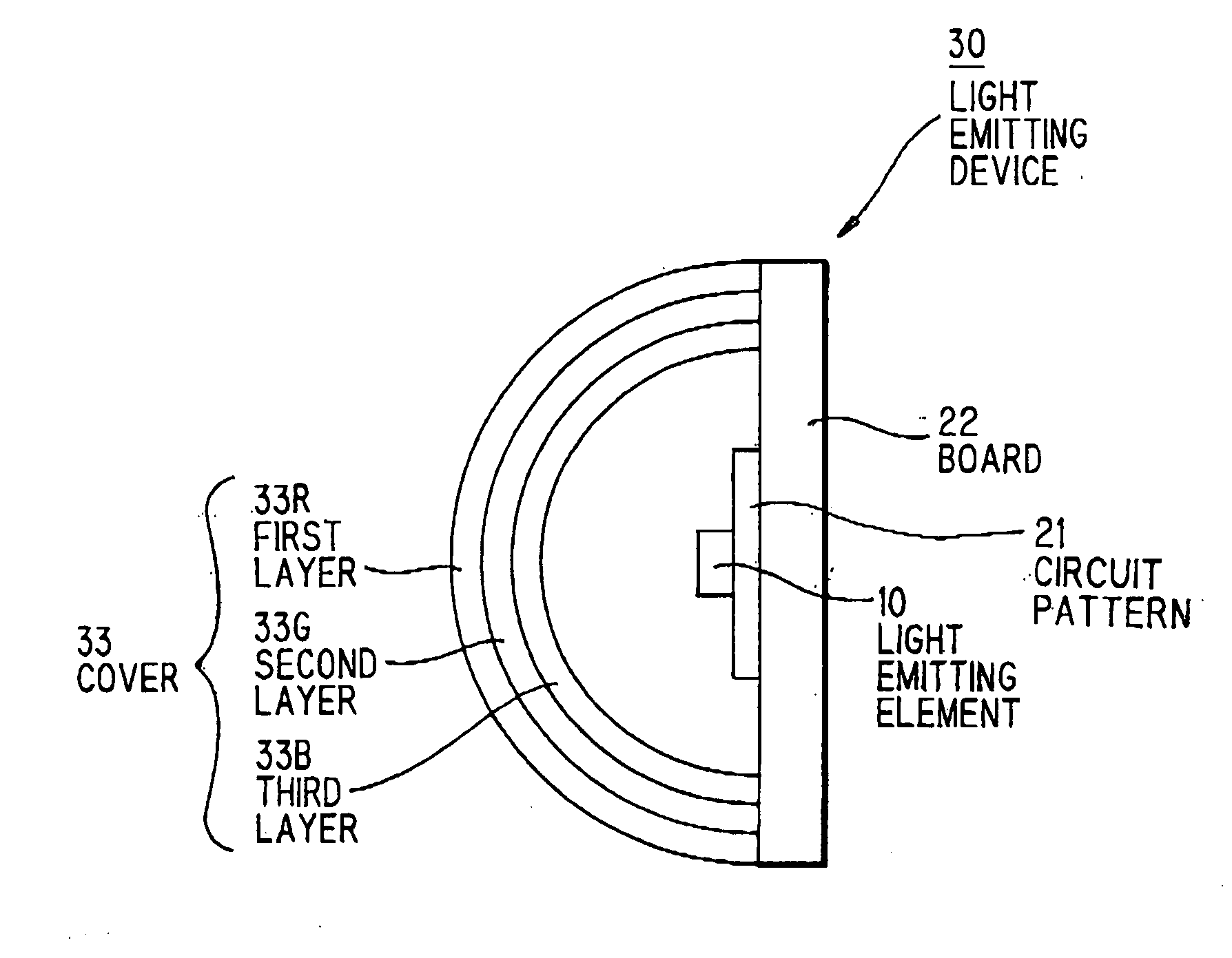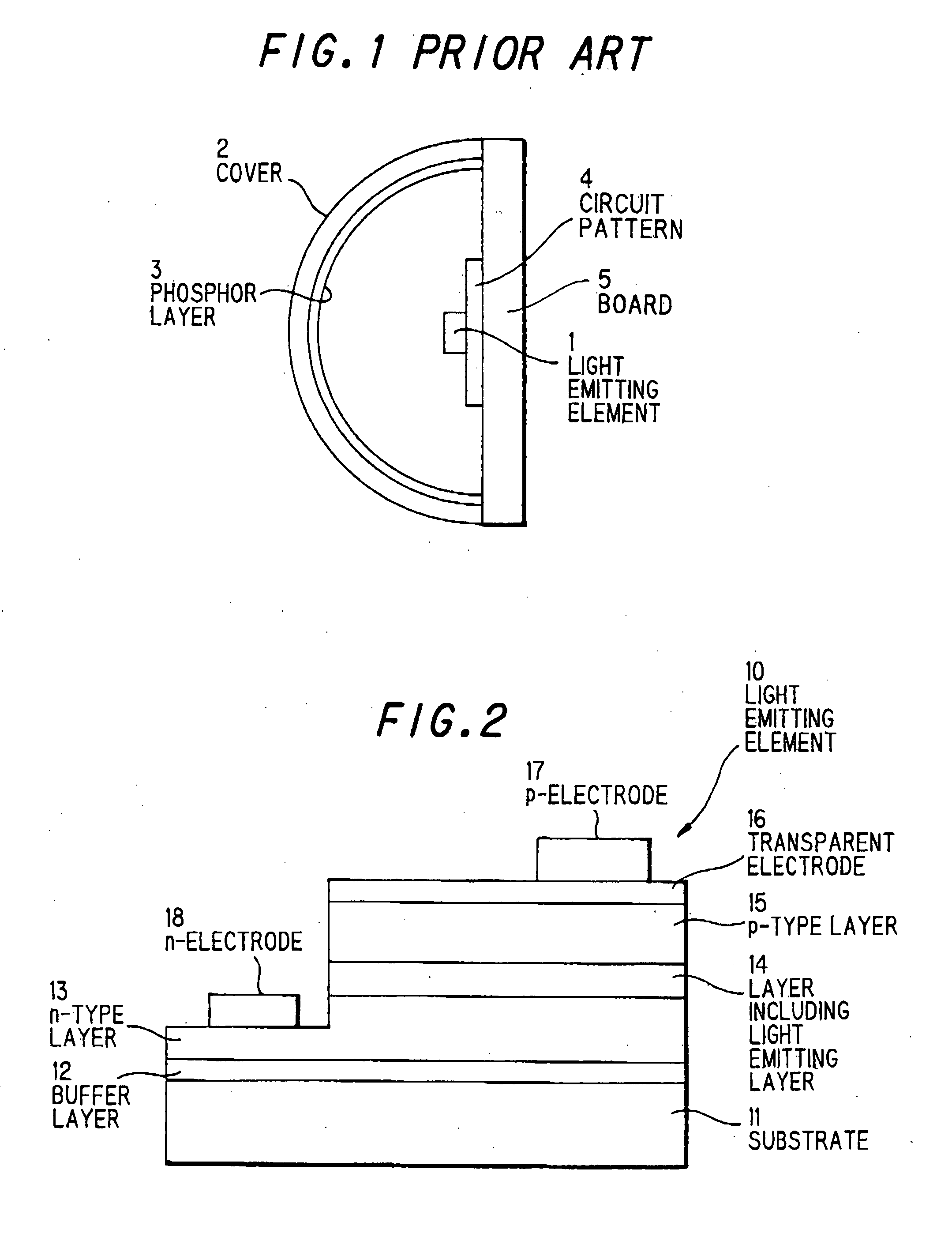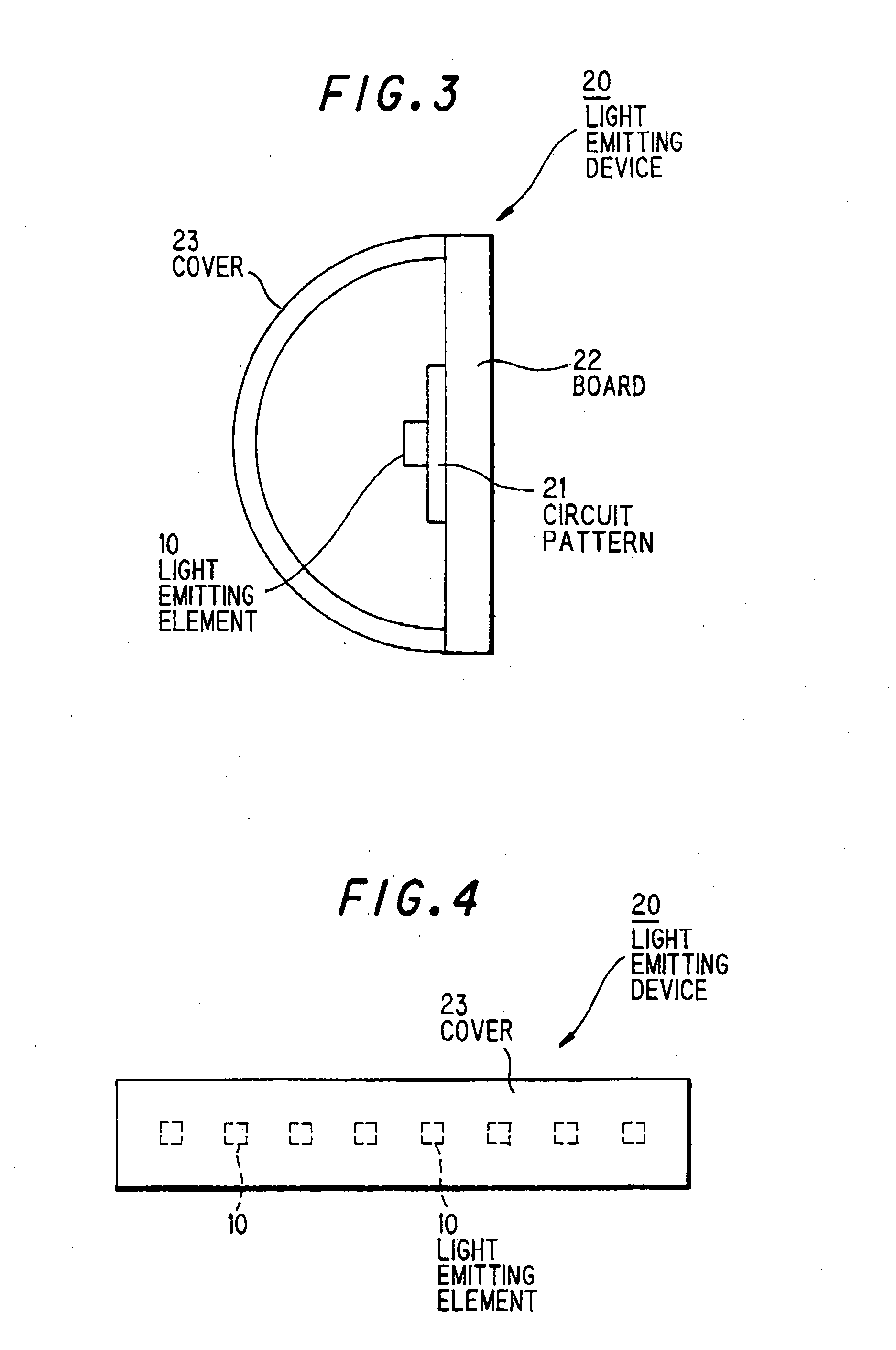Light emitting device
a technology of light-emitting devices and phosphor materials, which is applied in the direction of gas-filled discharge tubes, discharge tubes/lamp details, solid cathodes, etc., can solve the problems of insufficient prevention of phosphor material degradation due to moisture, increased manufacturing costs, and increased manufacturing costs
- Summary
- Abstract
- Description
- Claims
- Application Information
AI Technical Summary
Benefits of technology
Problems solved by technology
Method used
Image
Examples
first embodiment
[0054] FIG. 2 is a cross sectional view showing a light emitting element 10 used in the preferred embodiments of the invention.
[0055] In this embodiment, a face-up type III group nitride system compound semiconductor light emitting element 10 as shown in FIG. 2 is used. The light emitting element 10 emits ultraviolet light. The details of layers to compose the light emitting element 10 are as follows:
1 Layers Composition p-type layer 15 p-GaN:Mg layer 14 including InGaN layer included light emitting layer n-type layer 13 n-GaN:Si buffer layer 12 AlN substrate 11 sapphire
[0056] The emission wavelength of light emitting element 10 can be adjusted by controlling the composition ratio of III group element in layer 14 including light emitting layer. Alternatively, a flip-chip type light emitting element may be used that a thick p-electrode to cover the surface of p-type layer 15 is provided instead of a transparent electrode 16 and p-electrode 17.
[0057] n-type layer 13 of GaN with n-type...
second embodiment
[0072] FIG. 5 is a side view showing a light emitting device 30 in the second preferred embodiment of the invention. Like components are indicated by the same numerals used in FIG. 3.
[0073] As shown in FIG. 5, the light emitting device 30 is provided with a cover 33 composed of three layers (phosphor layer). A first layer 33R on the outer surface is of fluorophosphate glass with Eu.sup.3+ doped therein (Lumilass R7 (registered trade mark): SUMITA Optical Glass, Inc.), a second layer 33G at the center is of fluorophosphate glass with Tb.sup.3+ doped therein (Lumilass G9(registered trade mark): SUMITA Optical Glass, Inc.), and a third layer 33B on the inner surface is of fluorophosphate glass with Eu.sup.2+ doped therein (Lumilass B(registered trade mark): SUMITA Optical Glass, Inc.). The layers 33R, 33G and 33B are to generate red-system fluorescence, green-system fluorescence and blue-system fluorescence, respectively. By mixing these three-color fluorescence lights, white-system li...
third embodiment
[0075] FIG. 6 is a cross sectional view showing a light emitting device 40 in the third preferred embodiment of the invention.
[0076] In the light emitting device 40, the light emitting element 10 is disposed at the bottom of a cup portion 42 of a mount lead 41. The cup portion 42 is filled with a phosphor layer 45, and the mount lead 41 and sub-lead 43 are sealed with a lamp-shaped seal member 47.
[0077] FIG. 7 is an enlarged cross sectional view showing the phosphor layer 45 and its vicinity in FIG. 6.
[0078] The phosphor layer 45 is composed of a transparent material 46 of epoxy resin etc. and ground phosphor glass particles 48, which are of fluorophosphate glass with Tb.sup.3+ doped therein (Lumilass G9(registered trade mark): SUMITA Optical Glass, Inc.), being dispersed in the transparent material 46. Since the phosphor glass has a specific density that is not significantly greater than that of a general phosphor material such as YAG system phosphor, it can be evenly dispersed in ...
PUM
 Login to View More
Login to View More Abstract
Description
Claims
Application Information
 Login to View More
Login to View More - R&D
- Intellectual Property
- Life Sciences
- Materials
- Tech Scout
- Unparalleled Data Quality
- Higher Quality Content
- 60% Fewer Hallucinations
Browse by: Latest US Patents, China's latest patents, Technical Efficacy Thesaurus, Application Domain, Technology Topic, Popular Technical Reports.
© 2025 PatSnap. All rights reserved.Legal|Privacy policy|Modern Slavery Act Transparency Statement|Sitemap|About US| Contact US: help@patsnap.com



